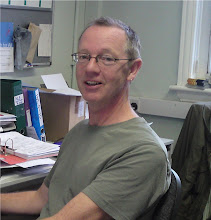The back to back tours were a bit frantic inside the house as the resetting time between each one seemed to shorten and we rushed from the end of one tour to the beginning of the next.
Outside the house, however, Tracy and Simon calmly managed the arrival of each successive audience and Helen kept them sweet as she collected their names in front of the house. Afterwards, Bobby, Natalie and Frances were there to receive them out of the house again and get their feedback; so for audiences, it was a much calmer affair.
As is usual in these things each audience behaved in a very individual way. It’s like the audience arrives at a shared character in the first few minutes – and then all the individuals with in it seem to respond in that way for the rest of the performance.
There are some lovely comments from them, collected after the shows:
“It was breathtaking!...As if the things in the house were alive.”
“Sonia was amazing...like an unobtrusive spirit within the house.”
“The falling feathers were beautiful. I felt I was in another world and things around me were awake.”
“It was all new to me. I wanted to know what was behind the next room. I wanted the journey to continue.”
“There is something about kathak on wood...The way it reverberates through the whole house.”
The residency, from my point of view was a tremendous success. The house, volunteers and staff, were very hospitable and kind (many thanks to all of you). The artists worked hard at establishing truthful and original reactions to the place and its history. Then the way in which the spoken word and the kathak combined in places like the Great Parlour was truly memorable and unique (and ended with the falling feathers….)
Highlights for me were the combination of the poetry, dance and Sonia singing in the great parlour, Dreadlockalien’s welcoming of people into the house (and the opening poem by the grandfather clock) and Sonia dancing in the entrance hall with Billie Holiday playing from one of the rooms close by.
At those moments, I felt the interaction between the artists and the location were at the very best, creating something unique, not just in terms of the art produced, but also in the history of that house.
If there's one incident that shows how important work like this is, in a wider context, it was when we were doing our final run before the performances on Saturday. As I said in the previous post, we were running through whilst there were visitors in the house. One of them stopped Deb, who was stage managing and asked why Sonia was performing in the house "there isn't an Indian connection, is there?". It wasn't said unkindly, but it demonstrates how people like to see and pigeonhole artists and their work. The only legitimate reason for a South Asian artist to be interpreting Wightwick Manor (or presumably any other historic house) is if there is a clear historical link to the subcontinent.
To project forward to a time when the heritage of the UK can be discussed and interpreted by its current population, what ever their cultural background, we need projects like this. To truly claim the cultural assets of the UK for all its population we need projects like this. And for the sheer excitement of combining original new artforms like hip hop poetry with classical Indian dance, in a historic house that's never seen the like before - we need projects like this.
I've really enjoyed the last two weeks. I shall miss working with Sonia and Richard, will miss Wightwick – and I'll definitely miss the cream teas from the café….













